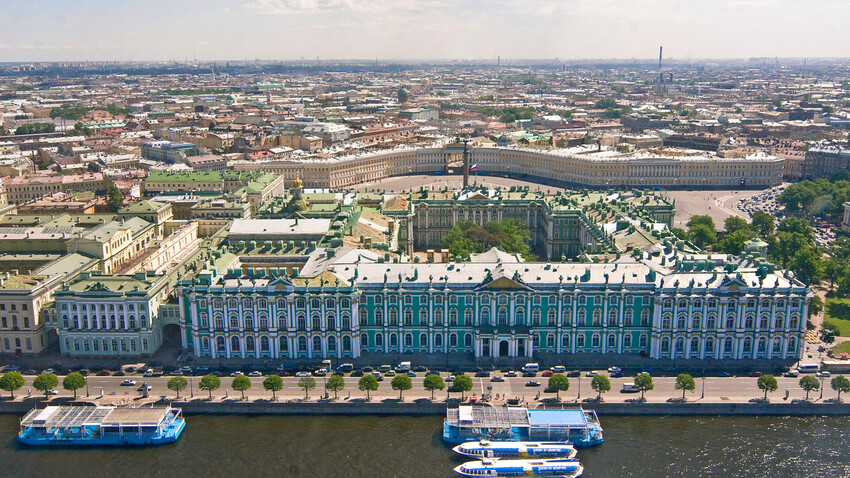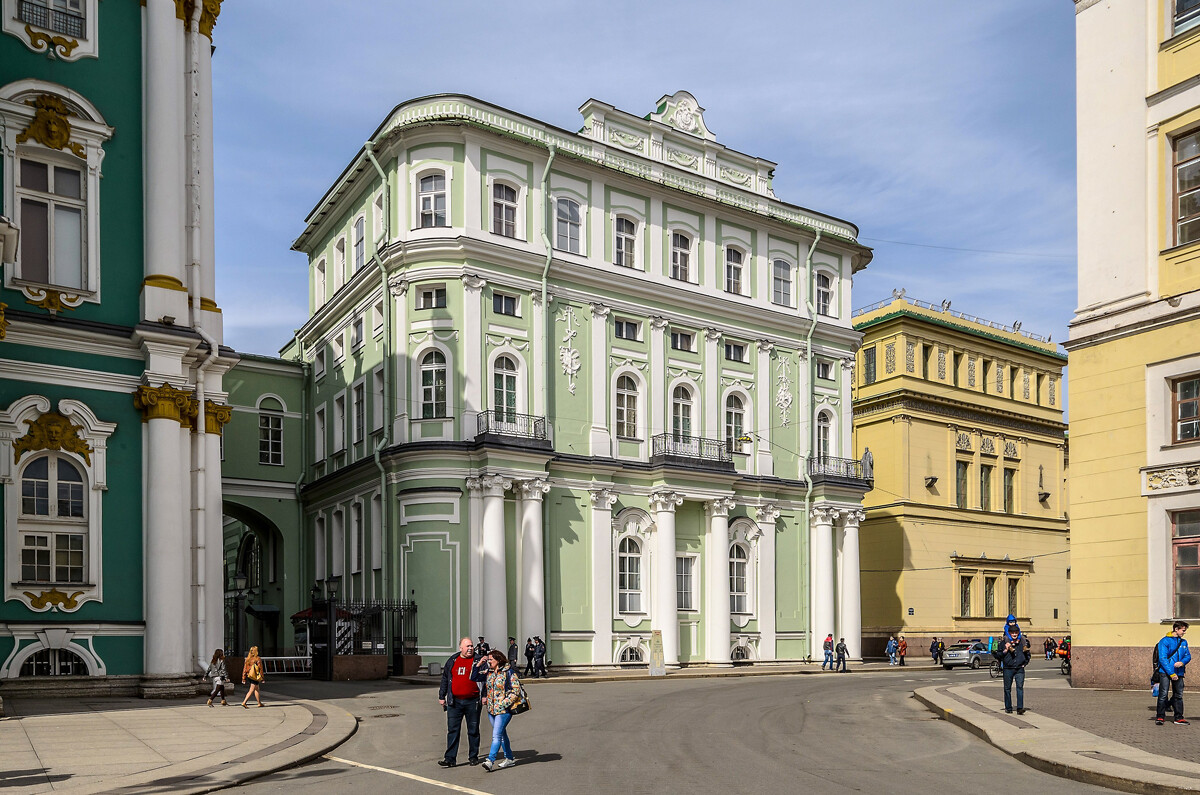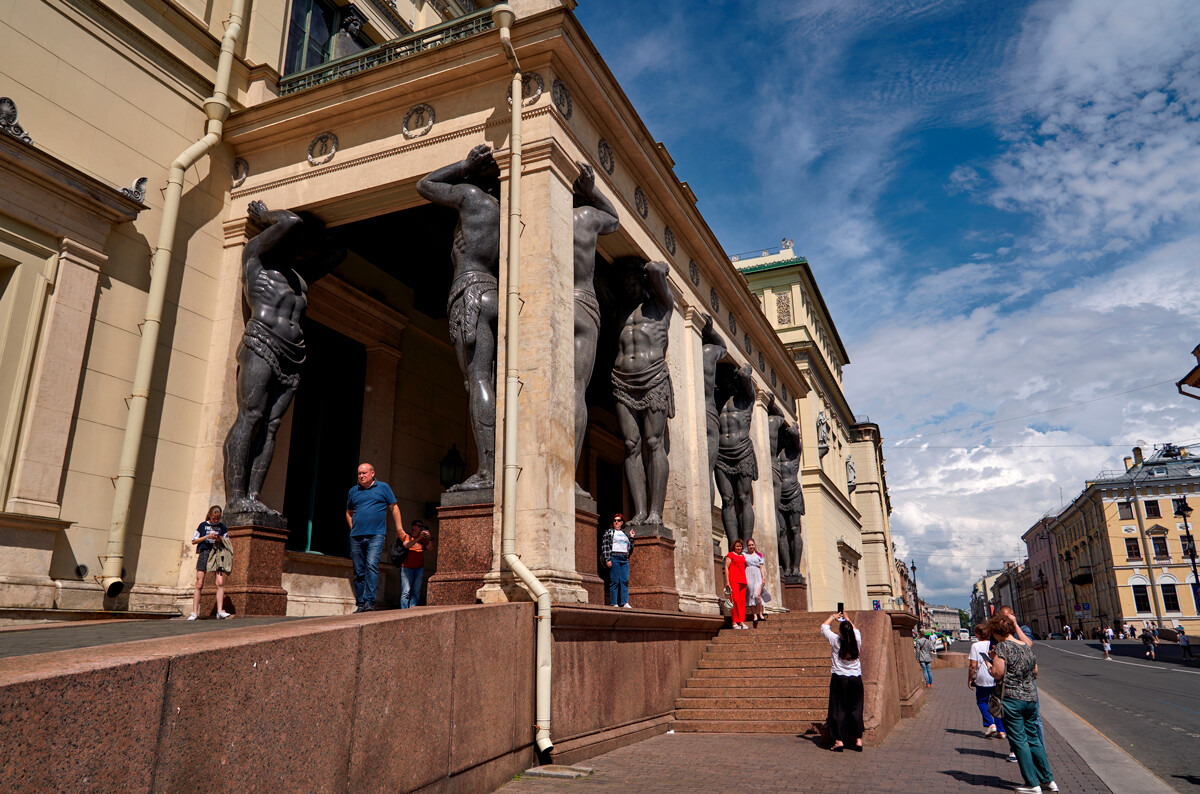
The Hermitage also has other buildings. Some of them are directly adjacent to the Winter Palace. They are:
– Small Hermitage
– Large (Old) Hermitage
– Hermitage Theater
– New Hermitage
Together with the Winter Palace, these five buildings form the Main Museum Complex. All of them are connected by inside passages.

There are also two buildings, not connected to the Winter Palace and attached to it as separate buildings, that are included in the Hermitage complex – the General Staff Building (located on Palace Square opposite the Winter Palace) and Menshikov Palace (1,500 meters away, on the Universitetskaya Embankment).
The museum got its name from the Small Hermitage (back then simply called ‘the Hermitage’), adjoining the Winter Palace and erected by the commission of Catherine the Great. She imagined it to be a secluded place for her private entertainment evenings – ‘small hermitages’. There, she also stored a collection of art pieces.

Small Hermitage
Alex 'Florstein' Fedorov (CC BY-SA 4.0)Catherine the Great’s collection was constantly getting new additions and a need for a new space arose – the Large Hermitage. Later, by her decree, the Hermitage Theater was also included into the palace ensemble.
The next building – the New Hermitage – was erected under Nicholas I. This was the first museum building in Russia: it was built specifically to exhibit imperial art collections.

New Hermitage
Alexei Danichev/SputnikThe Winter Palace was the tsar’s residence right until the 1917 Bolshevik Revolution, despite the fact that the imperial family had been living in Tsarskoye Selo since 1904. In 1915, by the decision of Nicholas II, the palace hosted a surgical infirmary for soldiers wounded on the fronts of World War I. From July to October 1917, the same walls were home to the Provisional Government. After overthrowing it, the Bolsheviks removed the infirmary and both the Winter Palace and the Hermitage were declared state museums.
The Winter Palace was renamed ‘Palace of Arts’. It functioned as an art and historical museum and, at the same time, as the Museum of the October Revolution. In 1945, “revolutionary” items were taken out and the building of the former imperial residence was finally turned into a part of the Hermitage.
Dear readers,
Our website and social media accounts are under threat of being restricted or banned, due to the current circumstances. So, to keep up with our latest content, simply do the following:
If using any of Russia Beyond's content, partly or in full, always provide an active hyperlink to the original material.
Subscribe
to our newsletter!
Get the week's best stories straight to your inbox